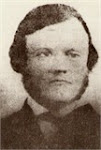The City of Madison Water Utility chromium webpage reports levels in its drinking water ranging from 0.4 to 1.8 ug/L or parts per billion (ppb).
All of these results are far lower than the EPA standard for total chromium (100 ppb), but EPA has not set a specific standard for chromium 6 (aka, hexavalent chromium) and all chromium is not created equally. The state of California has been considering adopting a 0.06 ppb chromium-6 standard (now reduced even farther to 0.02 ppb). The California Department of Public Health has considerable info. There are serious questions about whether such a standard is reasonably attainable.
Opinions vary on what are acceptable, reasonable levels, or safe levels of exposure to chromium-6 - or indeed whether there are such levels. The Environmental Working Group tested tap water in 35 cities. The average was 1.8 ppb. In that study Madison's water tested at 1.58 ppb. http://www.ewg.org/chromium6-in-tap-water
ABC News posted this story with contrary opinions from other scientists. (Scientists Say No Need for Alarm Over Chromium-6 in Drinking Water - Report on 'Erin Brockovich' Chemical' Called 'Alarmist').
While the story may be correct, I do take issue with couple things. The headline is like a fatherly pat on the head to all of us simple little people. "Don't worry, Father Knows Best". The sub-headline shouts that the EWG report was "alarmist". The story feels like the Official New and is really an opinion piece masquerading as straight news.
***
MORE INFORMATION ABOUT CHROMIUM
DNR has a PDF on chromium-6. http://dnr.wi.gov/org/water/dwg/chromium.pdf
The Madison Water Utility also has some good info and resources:
Madison Water Utility: Frequently Asked Questions about Chromium 6
US EPA – Basic Information about Chromium in Drinking Water
US EPA – Statement on Chromium-6 in Drinking Water
















"no detection," if that's what the report said, is somewhat deceiving. It should say "less than xx ppb," with "xx" being the detection limit of the analytical method. This is more accurate. For instance, if the detection limit is 0.05 ppb, then we know it may still be present, but at levels lower than that. Not an insignificant point when we still don't know the minute levels that might be safe or unsafe. Also know that EPA generally uses the "one in a thousand" risk assessment criteria for contaminants. This means that if people consume the contaminant at the specified level and rate, the risk of additional cancer cases is 1 per 1,000 people. That's a pretty reasonable standard.
ReplyDeleteSo are they going to test specifically for Chromium-6 in Monona tap water? You kind of beat around the bush without actually askin' the question.
ReplyDelete"So are they going to test specifically for Chromium-6 in Monona tap water?"
ReplyDeleteYes. And they already have done so. I thought I said that. Anyway, the Monona water utility will continue testing for it. To my knowledge this testing puts us at the forefront in the state.
"City staff reports that The city of Monona's most used well had 'no detection.'...Monona's other two wells had an average chromium 6 level of 1.24 ppb in the most recent testing."
First comment: "'no detection'...is somewhat deceiving." I agree that 'no detection' means none was detected at the sensitivity levels of the testing. I do not agree that it is deceptive to say there was 'no detection'.
Sigh. Fine. Substitue another word for "deceiving." Did not mean to say someone is trying to hide something. zheesh. you lawyers are always looking for trouble. Maybe "unclear?" Is that better? The point is a "no detection" finding is meaningless unless you know the detection limit. It's actually a very important piece of information when we're talking about such low concentrations and it's a distinction that doesn't necssarily occur to lay people who read such reports. Detection limits can vary quite widely for different compounds and different analytical methods.
ReplyDelete"Sigh. Fine. Substitue another word for 'deceiving'. Did not mean to say someone is trying to hide something. zheesh. you lawyers are always looking for trouble."
ReplyDeleteHey, Mr. Sciencey Guy, don't go sighing all over my blog; nobody likes to hear a big old sigh. Guy at work does that - right after gets done cracking his neck and twisting his back!
Yes, your points are, uhh, pointy. No, I mean they are good points. (I'm sleepy).
I thought I saw the level that the state lab uses in one of the ,links, but it might have been in a document linked from one of those links...Anyway, one of the arguments against the California rule is that most labs can't go all the way down to 0.02 ppb.
And what do you mean by that crack abotu lawyers? Hmm? I feel a lawsuit coming on!